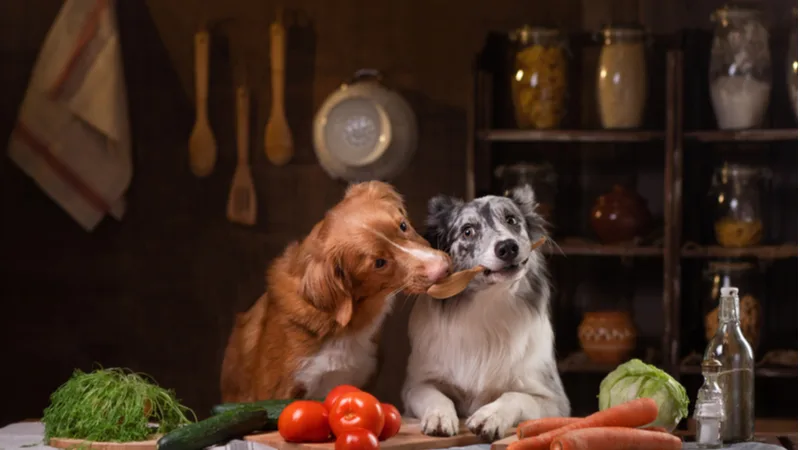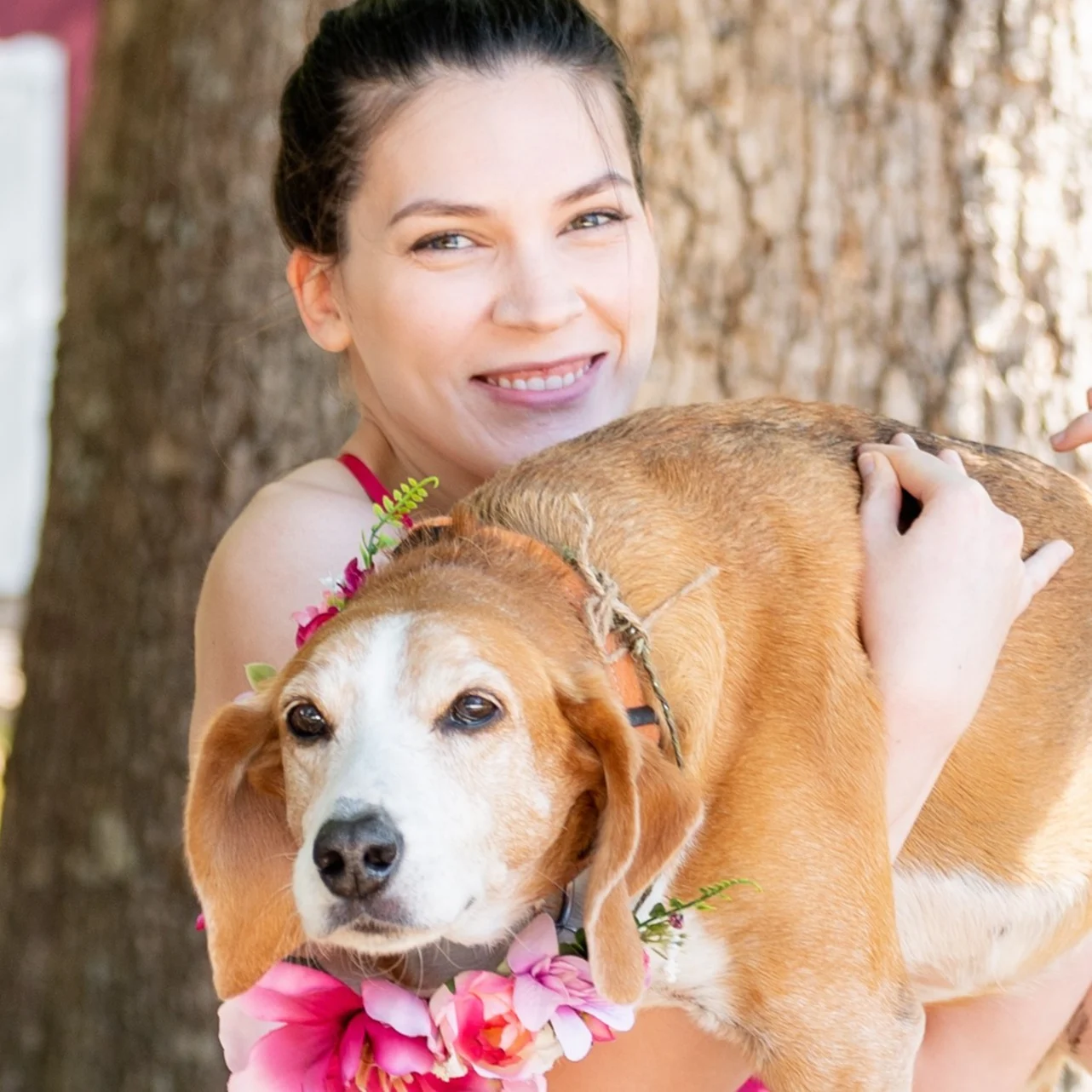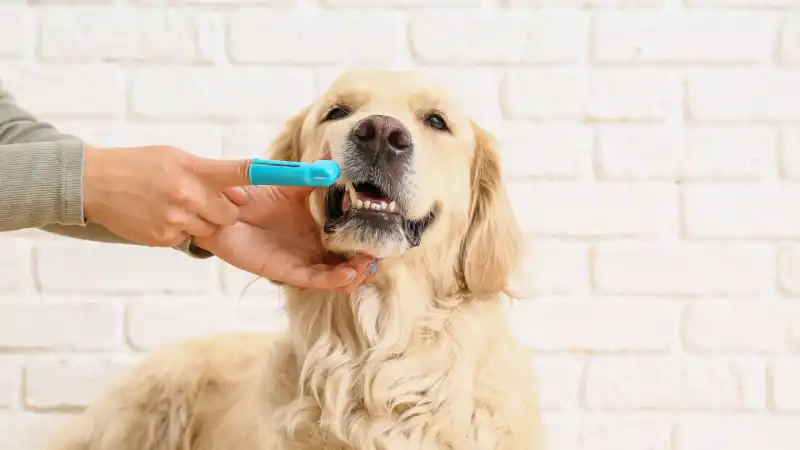Kibble or Human Grade Subscription Dog Food?
Considering human-grade dog food or other specialty subscriptions over kibble? Explore various types of dog food to find which best suits your pet.

Dogs love food as much as we do. So, it makes sense that we try to give them a well-balanced diet that is as tasty as it is nourishing. If you have been keeping up with the dog world, you may have noticed that meal subscription boxes are no longer just for humans. From your social feed, to commercials, to your favorite podcasts, advertisements for subscription pet food seem to be popping up all over the place.
Unlike the dry kibble you see packaged at your grocery store or might have used growing up to feed your own dog, fresh pet food has little to no preservatives. It is made with fresh ingredients, giving it an appearance similar to the chunky canned pet food you might see on a grocery store shelf. Since it has limited preservatives, it needs to be kept in a refrigerator between servings, since it can spoil faster than traditional dog food. The very name “fresh pet food” certainly sounds like a healthier option for your dog, but whether it is actually suitable for your pet may not be as clear.
If you’re curious about these pre-cooked concoctions or in the mood to treat your fuzzy friend to some fancy food, check out our take on the pros and cons of subscription dog food.
Why Dog Food Delivery Is So Popular
Pet food delivery sales have explodedduring the COVID-19 pandemic, since many pet owners had to find new ways to acquire pet care products. Online ordering does have its advantages over going to a traditional big-box store, such as the variety and ability to review your dog’s food. Also, no matter how much you love your dog, carrying a 40-pound bag of dog food to your car or on public transportation isn’t convenient. Online retailers deliver food straight to your home packed in dry ice and often prepared for your pup to eat!
What Is Kibble?
Dog kibble is the most common dog food in the United States. You are likely familiar with its crunchy texture and often ambiguous shapes. Since all of the ingredients in kibble are mixed, processed, and cooked together, the end product is often formed into a dry, oddly shaped bits of food.
Kibbleis required to contain protein sources (like chicken, beef, eggs, lamb), grains or cereals, and necessary vitamins and minerals your dog needs to survive. To keep the fat in kibble from becoming rancid, it includes preservatives to increase shelf-life. The downside of kibble is that some brands will use low-quality ingredients or filler (relying primarily on carbohydrates, for example) to produce cheap food that isn’t as nutritious for your dog.
As we mentioned above, one of the main benefits of kibble is that you are less likely to experience dog food spoilage. Kibble proponents also add that it assists with healthier gums, reduces dental plaque and costs, and limits bacteria risk. If you’re planning to feed your dog kibble, read the label to ensure it has the best ingredients for your pet. The best types of kibble for your dog will have protein as the first ingredient (such as chicken or beef), not grain. Although it may seem ideal to go grain-free, carbohydrates are still needed for energy. If your kibble contains grain, make sure to consult with your vet in case your dog has a sensitivity to wheat, soy, or corn.
What Is Raw Food?
Raw diets have also become trendy with dog owners seeking fresh food options for their pets. Raw food is very similar to fresh pet food, but it takes the “natural” angle one step further. It is often composed of uncooked organ meats, eggs, bones, muscle meat, and dairy. Supporters of raw diets believe that by simulating a meal your dog may have eaten naturally in the wild, they are receiving the intended nutrition and health benefits. Some owners believe it also improves coat and dental quality, increases energy levels, and helps produce healthier stools.
However, veterinarians caution dog owners against moving to raw food. Your dog might spread germs to children or people with compromised immune systems, potentially making them ill. Safely handling and preparing raw food also requires very thorough cleaning and care. Raw diets are also generally the most expensive type of dog food, since fresh meat or fish are required on a daily basis.
If you are still interested in feeding your dog a raw diet, speak with your veterinarian to see if they can provide guidance and teach you proper handling methods required for preparing raw food.
What Is Fresh Pet Food?
If you research fresh pet food brands, you’ll notice a wide array of ingredients, storage and preparation recommendations, and methodologies. Unfortunately, there’s no official or regulated definition for what the term ”fresh pet food” means. It might mean it’s food you mix together at home yourself, such as cooked rice and boiled meat, or it might be the ingredients are cooked and packaged together with little or no preservatives. Unlike raw food, many fresh dog food brands have cooked all of the meal’s ingredients at a low temperature, reducing bacteria risks and avoiding extensive clean-up.
Fans of fresh food share that a diet made with natural ingredients can have a positive impact on your dog’s overall health, improving heart health and vision, creating shinier coats, and reducing smelly dog breath. Researchers have even discovered that pets fed more digestible fresh food produce less poop, sometimes up to 66% less!
Reasons to Order Subscription Dog Food
Enriching your dog’s diet with fresh and natural ingredients can promote their overall health. From shiny coats to healthy hearts, proponents of fresh dog food say it makes all the difference for a dog’s well-being. While the requirements of fresh pet food may work for many families, preparing fresh food on a daily basis can be expensive or time-consuming in comparison to dog kibble. Veterinarians also warn that “Most homemade diets do not undergo the scrutiny and rigorous testing applied to commercial complete and balanced diets. If pet owners wish to feed their pets homemade diets, the diets should be prepared and cooked using recipes formulated by a veterinary nutritionist.”
That’s not the only warning from the experts. The Food and Drug Administration doesn’t require that fresh pet food products have premarket approval; however, the Federal Food, Drug, and Cosmetic Act (FFDCA) requires that pet foods, like human foods, be safe to eat, produced under sanitary conditions, contain no harmful substances, and be truthfully labeled.”
Types of Dog Food Delivery Services
Subscription pet foods offer options ranging from kibble to fresh food to meal kits and beyond! Does your dog have food allergies that limit what they can eat? Maybe you’re looking for a blend formulated just for your dog’s breed? Whatever your dog needs, a company can cater to them specifically and deliver it straight to your doorstep.
Human-Grade Dog Food
Animal feed regulations do not include the term “human-grade” among their definitions. Products considered fit for human consumption must have all human-edible ingredients and be manufactured, packed, and held in accordance with federal regulations outlined by the U.S. Department of Agriculture (USDA). “Human-grade food” is defined by the Association of American Feed Control Officials (AAFCO) as food “suitable for human consumption,” meaning that any ingredients in a product must be safe for humans to consume. In the dog food world, this implies that food made with whole fresh ingredients, like sweet potatoes or beef, might be of the quality you eat for your own meals. These dog foods lack the processed material and filler that is used to keep prices down on lower-quality brands.
In contrast, “feed-grade” is defined as being “suitable for animal consumption.” Just because something is “feed-grade” doesn’t necessarily mean it’s worse for your pet than human-grade. For example, chicken by-product meal (often composed of poultry organs, but not things like feathers or feet) is usually listed as “feed-grade.” Here’s where it gets tricky. Although there are many ingredients we can share with our pup, there are ingredients we can eat (like onions or chocolate) that would make our dogs sick. In that case, a product may be considered human-grade because humans can consume all of the ingredients, but it is not “feed-grade” because it is unsafe for animals. When it comes down to it, terminology is often just marketing language used to make you think you’ve made a healthier choice for your pet.
Portioned Food
Is your dog a little, uh, plump? They might benefit from having pre-portioned foods made just for them. While dog kibble has guidelines to let you know how much you should be feeding your dog, it might not always be accurate based on your dog’s activity level and metabolism. Dogs also just like to eat, especially breeds who carry a gene limiting their ability to feel full. Some subscription food plans examine your pet’s size, age, and weight and determine their specific dietary needs, creating pre-packaged portions just for them. With pre-portioned sizes, there’s no guessing if your dog is getting too much or too little food, or if food is being wasted. Less bulky containers = less clutter.
Themed Boxes
Want to treat your dog (and, let’s be honest, yourself)? You might want to check out some of the many themed boxes of treats and toys that can be delivered directly to your home. Some companies even ensure that these treats don’t contain ingredients like corn, wheat, or soy. Suppose your pup has a sensitive tummy or food allergies. In that case, you can request a box that abstains from any ingredients that irritate your dog. Bonus: they may also throw in a special present for your dog’s birthday.
Air-Dried Food
If you’re looking to really spoil Fido, freeze-dried food may be the way to go. Air-dried dog food contains no fillers and is similar in texture to jerky. With dried food, there’s less worry about food leakage or taking up too much space in the refrigerator. Your dog may be begging, but freeze-dried food can cost as much as $75 for a 40-ounce bag. While that may seem like an enormous price for a small amount of food, another way to look at it is how many calories the food provides. Fresh food diets tend to have lower calorie counts when compared to similarly-sized food portions of kibble or air-dried food. This difference is similar to a comparison between fresh fruit and dried fruit. Because there is less water in dried food, there is a high-calorie density. This means it can be easy to over or underfeed your dog. Follow the food guidelines provided with your subscription service and consult your veterinarian for recommendations.
How Much Do Dog Food Subscriptions Cost?
Subscription pet food can cost as little as $2 a day, depending on the size and needs of your dog, However, there is a lot of variability in the pet food market. Depending on your dog’s specific needs and how frequently you need deliveries, that price could skyrocket to $75 a week. Many pet food subscription brands also offer quizzes on their websites that provide an estimate on what’s needed based on the breed and health of your dog. We recommend trying this method out with multiple brands and reading their reviews to compare the value. In fact, your pup might not even mind trying out a sample. You know, for science. You can also check out if there is a return or guarantee policy, in case your pet doesn’t like it.
More Trends to Watch
Pet food trends typically follow human trends. For example, when gravy became popularized in the 1950s, gravy-branded dog food was soon to follow. Similarly, when gourmet food got popular in the 1980s, fancy cat food brands tried to mirror pet owners’ palates. These days, younger buyers are inspiring a new pet food trend: safe and natural.
It is estimated that pet food is responsible for 25% of meat production's environmental impact. As humans reduce meat intake or go plant-based, pets’ diets are also beginning to resemble these changes. While we don’t recommend having your pup go vegan anytime soon, there are ways to limit their consumption of meat while still getting the necessary amount of protein. For example, the use of insect protein in dog food is becoming more prevalent as the world develops creative solutions to deal with food shortages and climate change. While eating creepy crawlies may not sound appealing to humans, most dog owners will agree that their pups will eat just about anything.
Pet owners are also seeking more organic and sustainable ingredients in their dog food, changing how dog food brands run their operations and choose their packaging. These changes in the pet food market are coming fast, but a health-conscious marketplace can help when choosing an appropriate brand for your pet.
What Should I Feed My Dog?
Determining what foods are best for your dog can be overwhelming when there’s so many options. The reality is that there’s no one-size-fits-all food to meet all of your dog’s biological needs. Only you and your veterinarian can decide what’s right for your pet.
Also, when choosing a food, be sure to evaluate the following:
**Nutrition:**A healthy diet has a positive impact on your dog’s behavior and overall well-being.
**Allergy-friendly:**Consider allergens and your dog’s sensitivities when reviewing ingredient lists.
**Caloric Needs:**Remember: Your couch potato pup isn’t going to need as many calories as an active working dog.
**Tastiness:**Just because something is healthy doesn’t mean your dog won’t turn their nose up at it.
**Convenience:**Making fresh food for your dog sounds nice, but do you have the time to spend preparing meals or space to store ingredients?
Take some of the stress out of pet ownership with Accident & Illness Coverage from AKC Pet Insurance (underwritten by Independence American Insurance Company). Our pet insurance plans are designed to be there when you need them, allowing you to focus more on the health of your pet and less on costly veterinary bills. Click here for a quote today!

As an avid fan of all things that meow or bark, Jodie uses her expertise in human and animal health to have a positive impact on the well-being of pets and their owners. Jodie lives in Durham, NC with her cat, "Noodle", and two dogs, "Lilly" and "Clementine".
READ MORE ARTICLES

